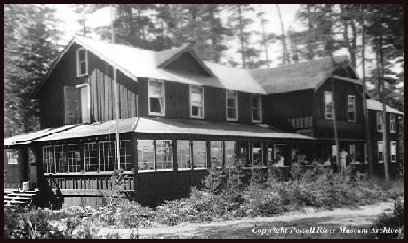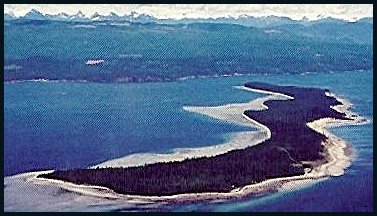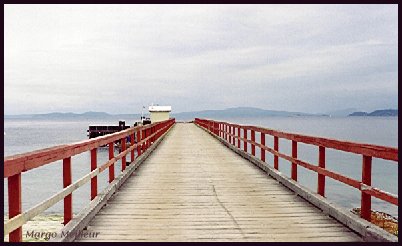|
|
 |
So wrote Captain George Vancouver on July 1, 1792 in his dispatches to his British Majesty, King George III. For centuries the beautiful beaches, warm waters and abundant food sources have drawn people to this island. It is said that the Sliammon First Nations used it as a principle summer meeting spot, a fact verified by the presence of numerous middens of empty clam shells at various places on the island. There are also stories of fortification of the Western tip (now known as Indian Point) against raids from other First Nations. |
Later, there were white settlers, whose children and grandchildren are still living in homes along the shores or in the forests. In the 1930's and 40's the passenger steamships that operated on the coast brought "daytrippers" and visitors to the Royal Savary Hotel. Today the hotel is gone, but the island's appeal remains with bed and breakfast and cottage rentals available for visitors. |
 |
Savary Island, approximately 8 kilometers long and less than a kilometer wide, has been described as the "Hawaii of the North". There are several factors that contribute to that feeling of being on a South Seas Island. Savary is located in a "rain shadow" from Vancouver Island and with an elevation of only 300 feet seldom catches any rain clouds. |

|
The waters have been called the warmest in the Pacific Northwest (averaging 72 degrees Fahrenheit)due to tidal streams from the North and South meeting close to the island but leaving the waters relatively undisturbed. On the sheltered Northern side, there are long, shallow beaches of white and gray sand, while the more exposed Southern side offers long rolling waves that break on a rockier shore. |
The vegetation is incredibly varied due to the mild climate and sandy soils. One can find wild flowers growing on meadows and sand dunes that are typical of regions further south. Lush forests of cedar, fir, hemlock, pine, and even a ridge of yew trees, along with a host of wild blueberries, blackberries, and huckleberries are found in the interior of the island. |
There are also some unusually large Arbutus trees, one of which is claimed to be the largest in British Columbia. All of this offers sanctuary to deer and a variety of birds such as bald eagles, swallows, hummingbirds, screech owls, blue herons, kingfishers and an abundance of sea birds. A lack of paved roads and electricity have maintained the island's unique character, but the approximately 90 year round residents have made themselves comfortable with solar, propane, and other modern power sources. |
 |
 |
A water taxi shuttle service is available year round from Lund, able to transport people, pets, supplies and pretty much anything imaginable. A land taxi is also available to haul you and your possessions to your desired destination. There is also a small unpaved landing strip in the center of the island. In the summer time, "Daddy Flights" are a common sight as floatplanes and airplanes bring fathers to join their families for the weekend. |
|
|